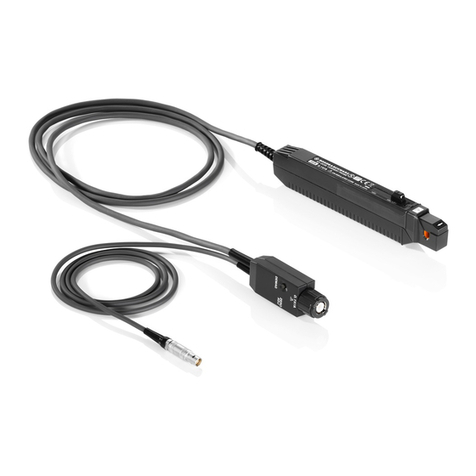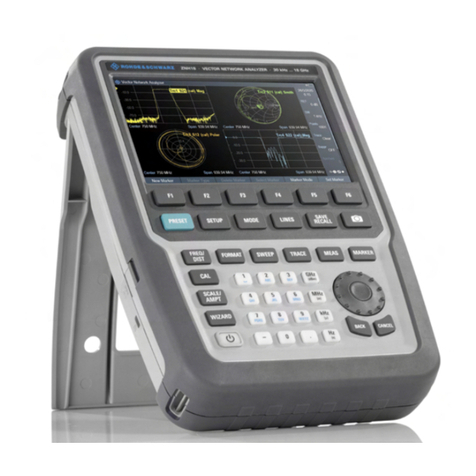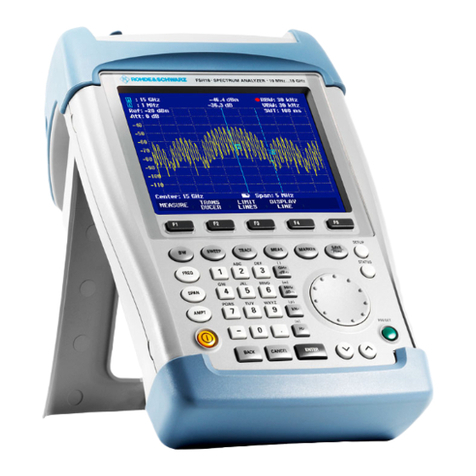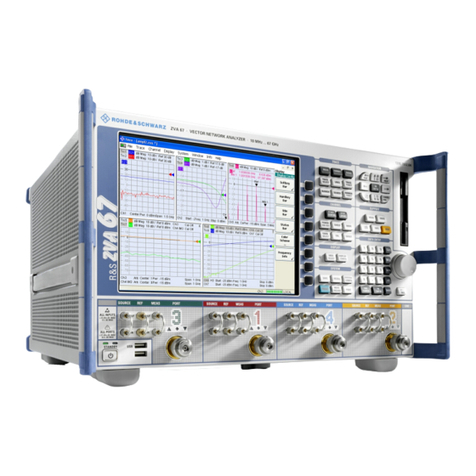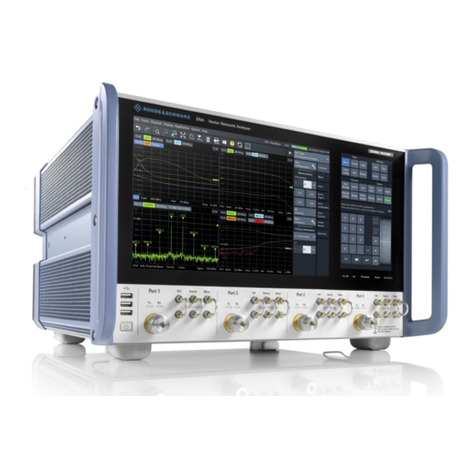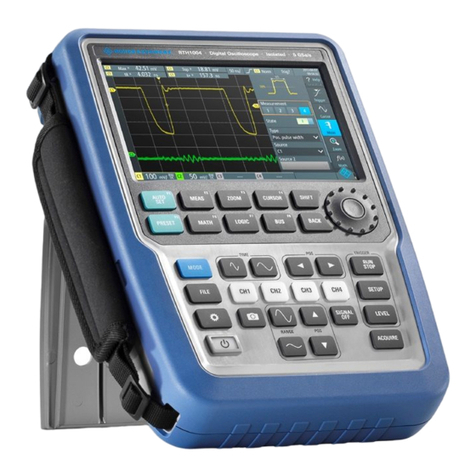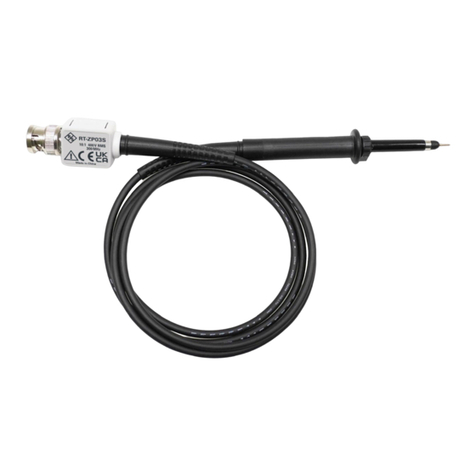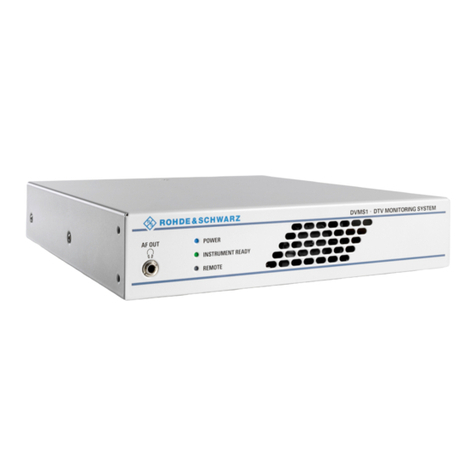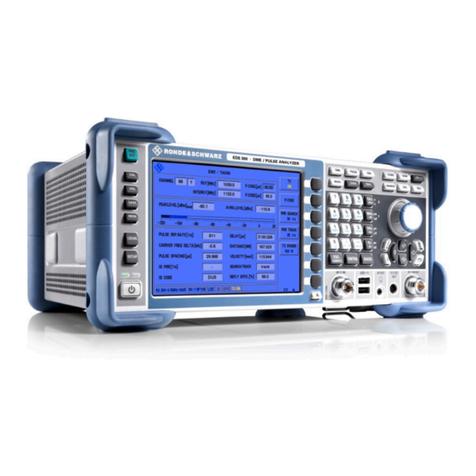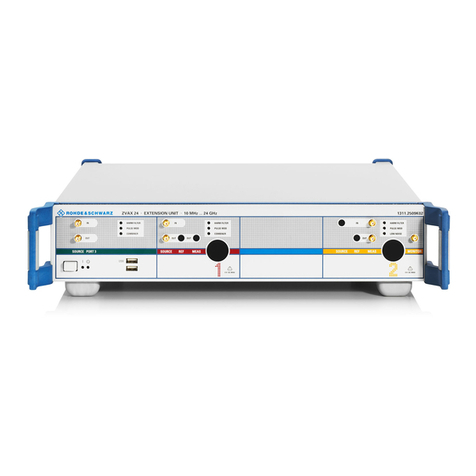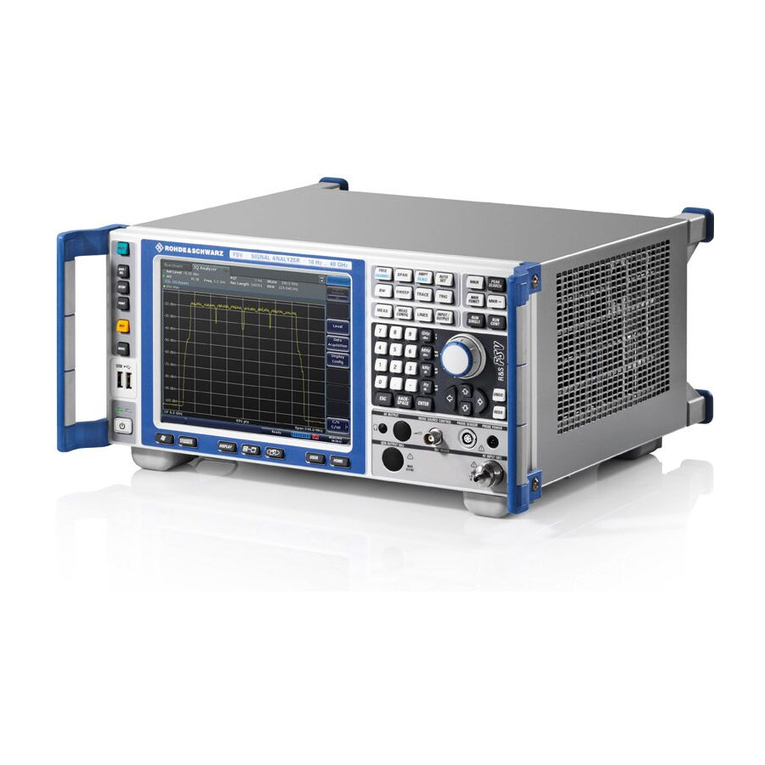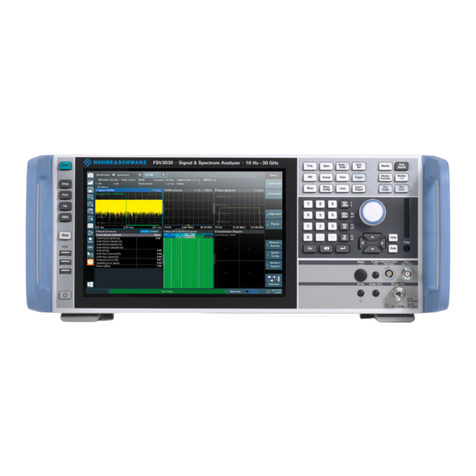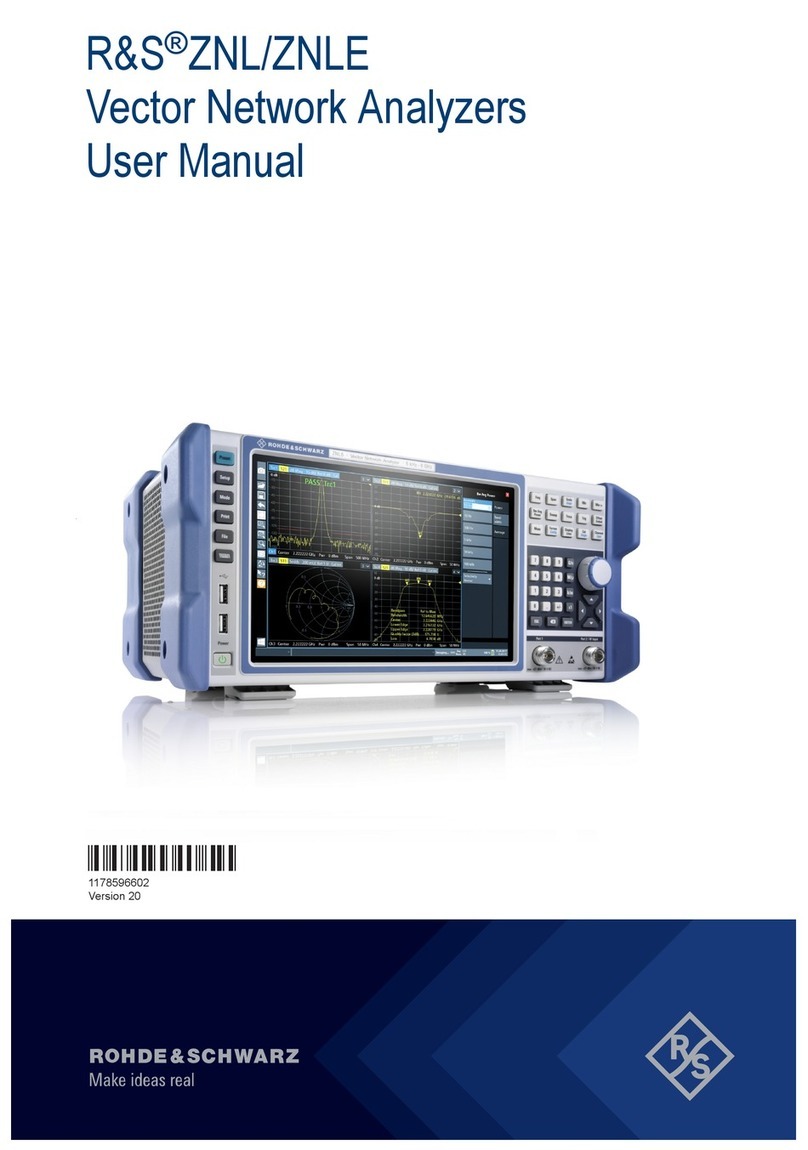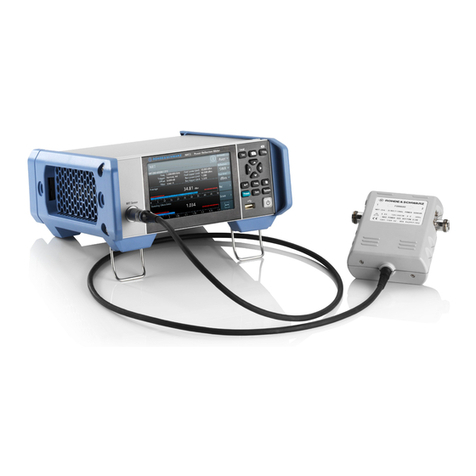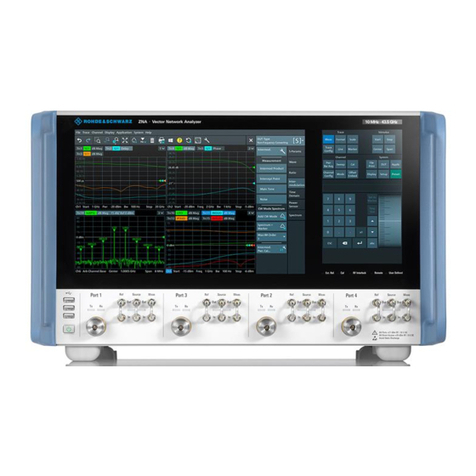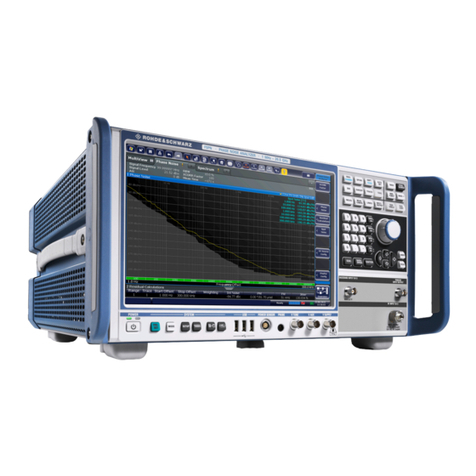
R&S©FPC-Z10 Teaching Kit
Getting Started 1178.8436.02 – 045
Attenuator
Both the upconverter and downconverter have an attenuator. Both signal paths have a DIP
switch to select the attenuation (7).
Move one of the switches to its "Off" position (the side of the inscription).
Each switch corresponds to a specific attenuation. The switches are
additive.
Example: If you move the "8 dB" and the "2 dB" switches to their "Off" position you get an
attenuation of 10 dB. Thus, you can define an attenuation between 0 and 31.5 dB.
Switches 7 and 8 have no function.
Local oscillator configuration
The local oscillator (LO) can supply two different frequencies. The LO frequency is used by the
mixer to change the frequency to the intermediate frequency (IF). You can select the frequency
with the jumper (1).
Position 1: LO frequency of 233.5 MHz.
Position 2: LO frequency of 636.5 MHz.
Select this frequency if you are using the internal bandpass
filter.
Synthesizer configuration
The synthesizer provides the frequency for the local oscillator. You can select the
synthesizer state with jumper (2)
Position 1: Turns on the synthesizer.
Position 2: Resets the synthesizer.
A synthesizer reset is necessary when you change the LO
frequency. After a reset, you have to switch the jumper to
position 1 again.
Calibration kit
You can calibrate VNA measurements with the calibration kit. It provides all necessary
calibration standards: a short, an open, a 50 Ohm match and a through.
The setting of jumper (6) selects the usage of connectors (C), (D) and (E) (labeled "Short" and
"Open").
Position 1: Selects a short and open calibration.
Position 2: Selects a through calibration.
For a comprehensive description of the calibration procedures, refer to the R&S®FPC user
manual.












